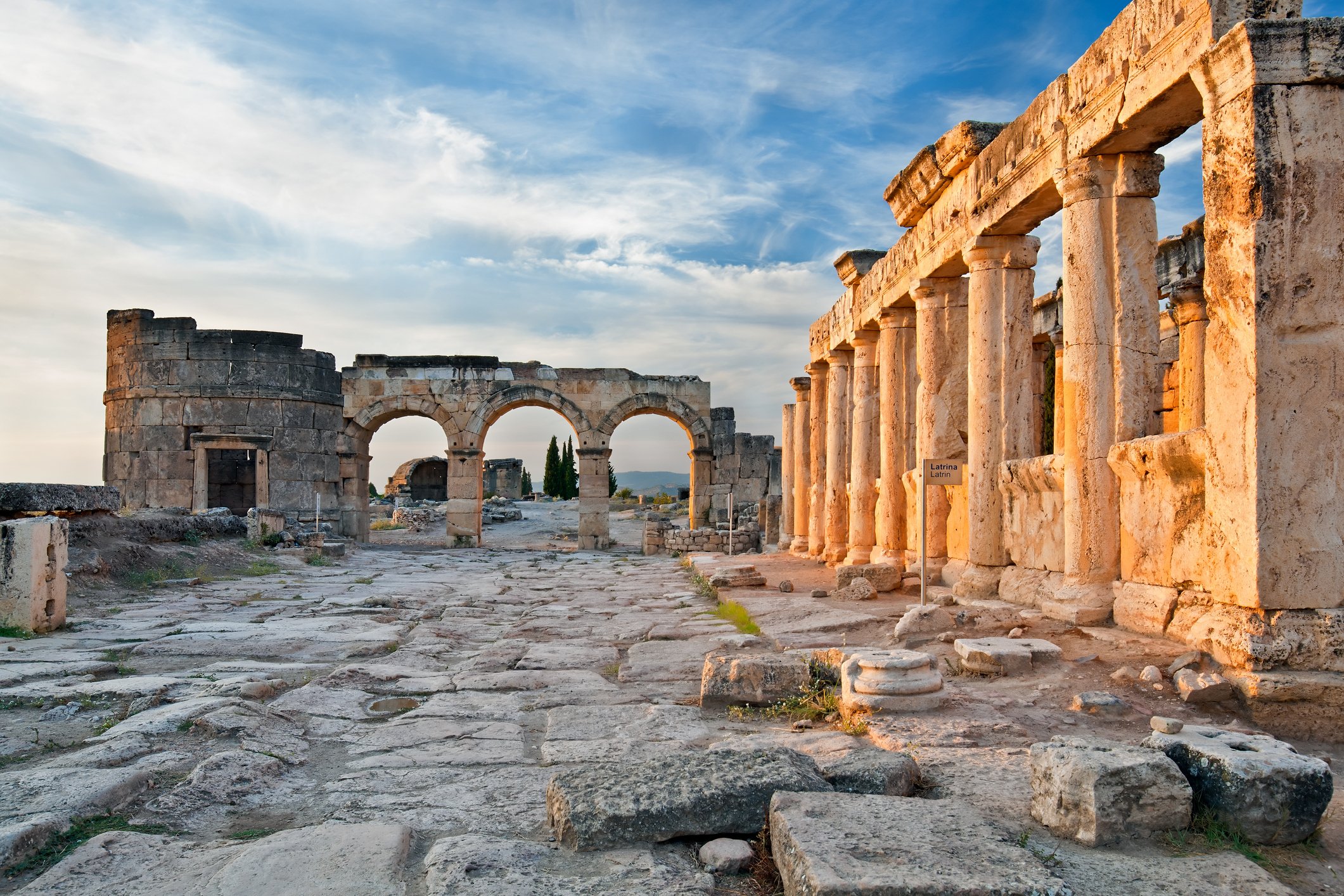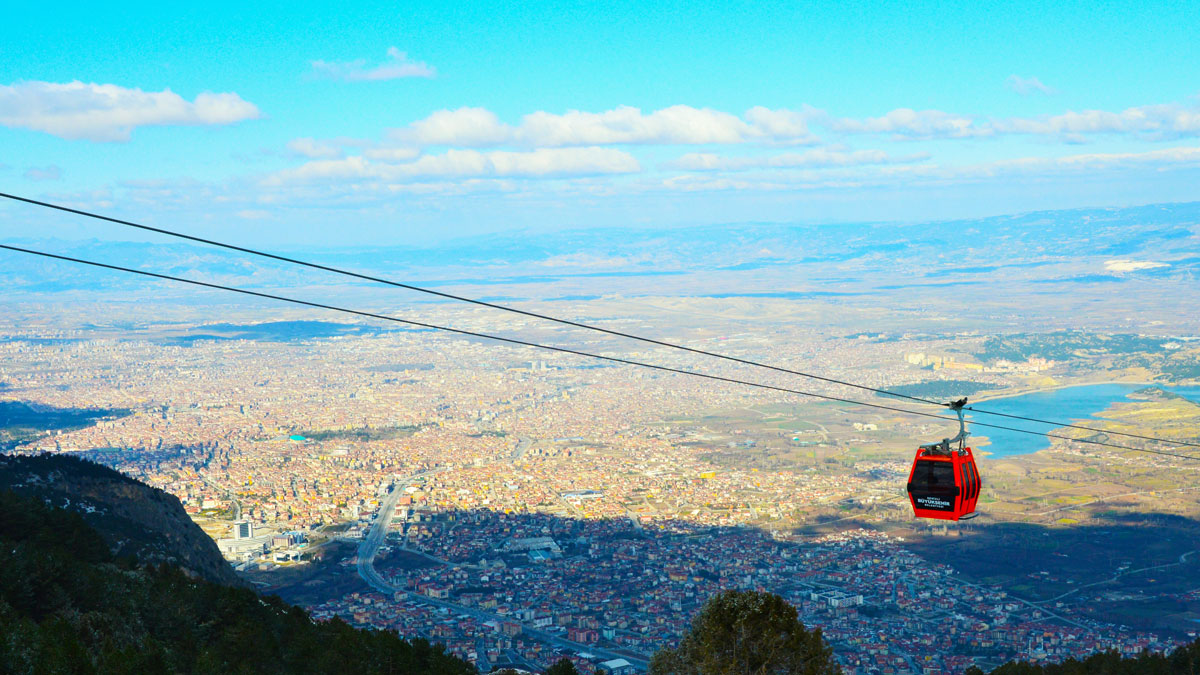
Pamukkale - Turkey
Pamukkale is a surreal natural wonder made of semi-circular white travertine between green fields. This white hill is one of Turkey's most photographed places and one of Turkey's most famous natural attractions. Most visitors come here only in Travertine, but the vast and vast archaeological site of the Roman spa town of Hierapolis is at the top of the Travertine hill, one of Turkey's best spots for history-conscious travelers. is. The best thing you can do at the ancient ruins is to enjoy the mineral-rich waters of the famous hot springs, but beyond that you will find well-preserved Hierapolis theaters, various temples and monuments, and a large necropolis area. You can find more in Pamukkale's list of top attractions.
1. Walk up and down travertine
Pamukkale's dazzling white calcite cliffs were created by limestone deposits from hot springs in the area. Just as stalactites are formed in limestone caves, sediments grow on steep slopes and gradually fan out to form natural terraces. Pamukkale means "cotton castle", and the dazzling white color of these travertines looks like some strange natural fortress. The best way to experience travertine is to walk up and down the ridge of the terrace, which runs from the foot of the hill in Pamukkale village to the central entrance to the ancient ruins of Hierapolis on the summit. This is the only section you can walk on and you are allowed to enter travertine barefoot. The semi-circular terrace on the upper floors here has a puddle (mostly from the ankle to the middle of the calf) and reaches above. When you reach the top of the hill, a wooden walkway runs most of the length along the top of the travertine, from which you can take a panoramic picture of the travertine hill and the landscape behind it.
2. Explore the ruins of the city of Hierapolis
Hierapolis was first mentioned shortly after 190 BC. Founded by Eumenes II of Pergamon, it was originally a fortified military colony. The original city was destroyed by the 60 AD earthquake, and after its reconstruction, the days of glory began. During the 2nd and 3rd centuries, when it became the center of an important hot spring with natural hot springs, the city achieved its greatest prosperity. The wreckage of a large colonnaded road runs 1 km parallel to the travertine below, extending between the Necropolis in the north and the Byzantine church at the southern end. Follow the road east of the church to the Temple of Apollo and its famous plutonium (the cave under the temple that was the source of poisonous gas). Here, the monks consulted the oracle and brought in birds and small animals that were killed by the rising gas. Both the temple and plutonium have undergone extensive restoration and will be reopened to visitors by the end of 2021.
3. Admire the Hierapolis Ancient City
On the slopes overlooking the huge ruins of Hierapolis, there is a powerful theater in the city with a façade over 100 meters long and two rows of seats, 26 rows each. The theater was built during the reign of Roman emperors Hadrian and Septimius Severus and is incredibly well preserved. The Imperial Box (where VIP guests would have seen entertainment) and some decorative panels along the stage retain much of the original details. The upper seats offer stunning views. If you don't want to climb the hill to see the theater, you can hire one of the drivers of a large golf cart waiting outside the ancient pool complex to move up and down again.

4. Pamukkale Antique Pool
If you want to take part in a hot pool dip where you can relax like a Roman, but without Toga, you don't have to look anymore. At Pamukkale's antique pool, located between the museum and the Temple of Apollo in the middle of the site, you can soothe your tired travel muscles with mineral-rich hot spring water at 36 degrees Celsius. It may be the most atmospheric hot spring experience ever, with the pillars half submerged and the fallen marble debris scattered on the surface, but it's so popular that be prepared for the crowd. Many of the major tour buses to Pamukkale do little in Hierapolis, except for the ancient pools and theaters. So, if you want to take a bath without being crowded, please come early or late.
5. Visit the Hierapolis Museum
This small but excellent museum dedicated to Hierapolis is located in the ancient Roman baths of the ancient city. The museum is in front of the ancient pool complex, just behind the central entrance leading from the travertine path. A visit here will help bring the city to life with exhibits that showcase some of the artistic and cultural heritage of this once important city. The museum's three rooms display a variety of discoveries from the ruins, including beautiful and intricate stone reliefs, sarcophagus and statues. In addition, steles, stigmas, tombs and carved stone reliefs are on display outside the garden.
6. Discover the Christian Ruins of Hierapolis
The most important Byzantine ruins that survived the ruins of Hierapolis were built where the saints and their children were allegedly martyred after protesting the pagan worshipers of Hierapolis. It is the martyrdom of the apostle Philip. .. Martyrs are located on a ridge above other ruins and are accessible via a path that runs both to the theater and behind the ruins of the capital. Martyrdom spans three levels. At the bottom is a modern bridge that acts as the original bridge from number four. On the other side of the bridge is the ruins of an octagonal Byzantine bathhouse. From the bathing facility, climb the stairs to the middle floor to see the pilgrim's fountain and the ruins of the church.

7. Ride the Denizli Cable Car
All of them pass Denizli on their way to Pamukkale, but few stop here. This completely modern city is the state capital and developed into a bustling center in the 14th century. The great medieval Arab traveler Ibn Batuta described the city as a beautiful trading center with seven mosques, baths, bazaars and princes. Denizli was destroyed twice by the earthquake. One was destroyed at the beginning of the 18th century and the other in 1899. As a result, the city has no historic buildings. On the other hand, in the suburbs, there is Denizli Teleferic, a cable car that commutes to the top of the 1500-meter-high mountain. The view from the height of the entire plain to Pamukkale is worth a drive.
Thank you, we have received your enquiry!
We have received your message and would like to thank you for writing to us. If your enquiry is urgent, please use the telephone number listed on this page, to talk to one of our staff members. Otherwise, we will reply by email shortly.
